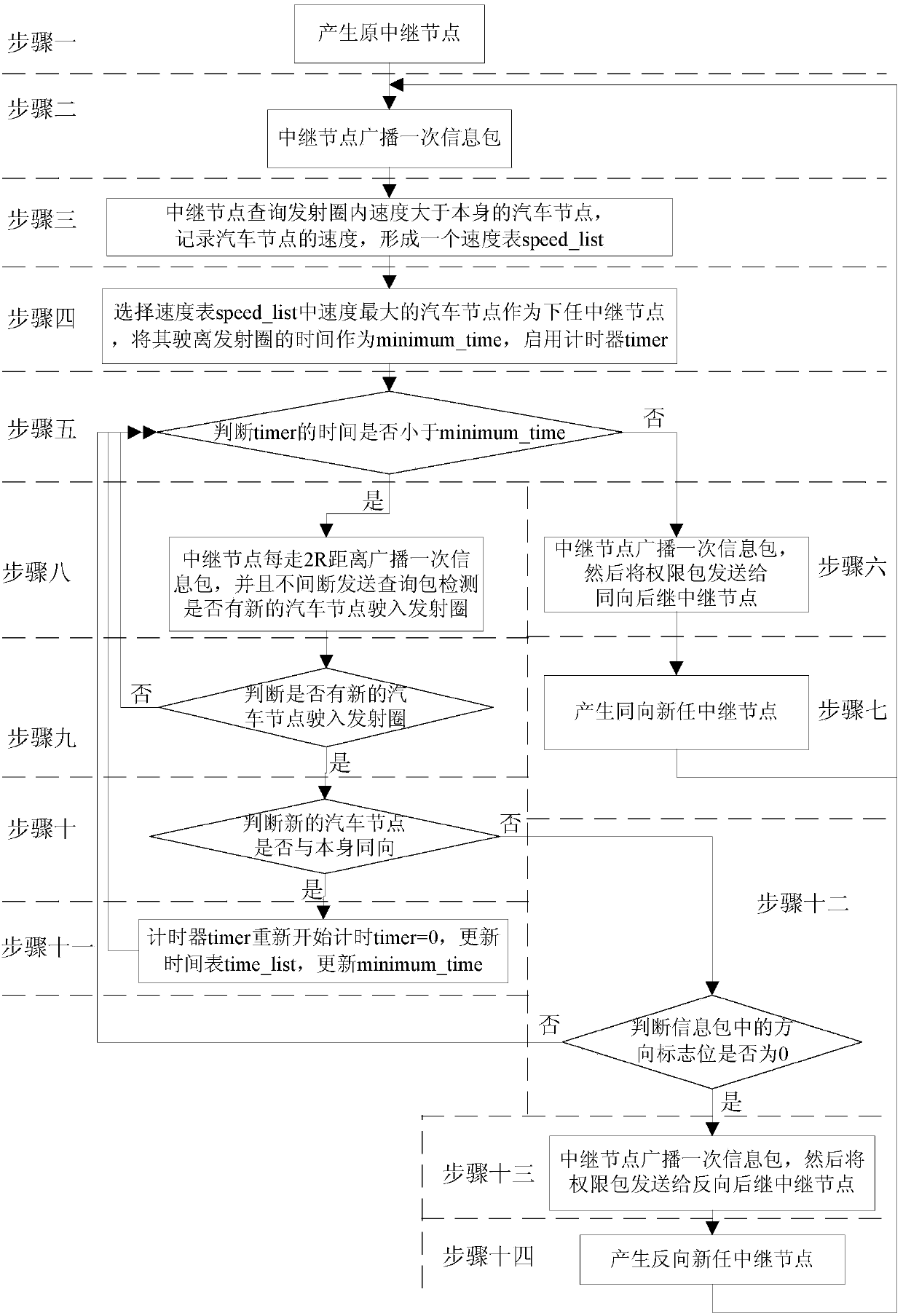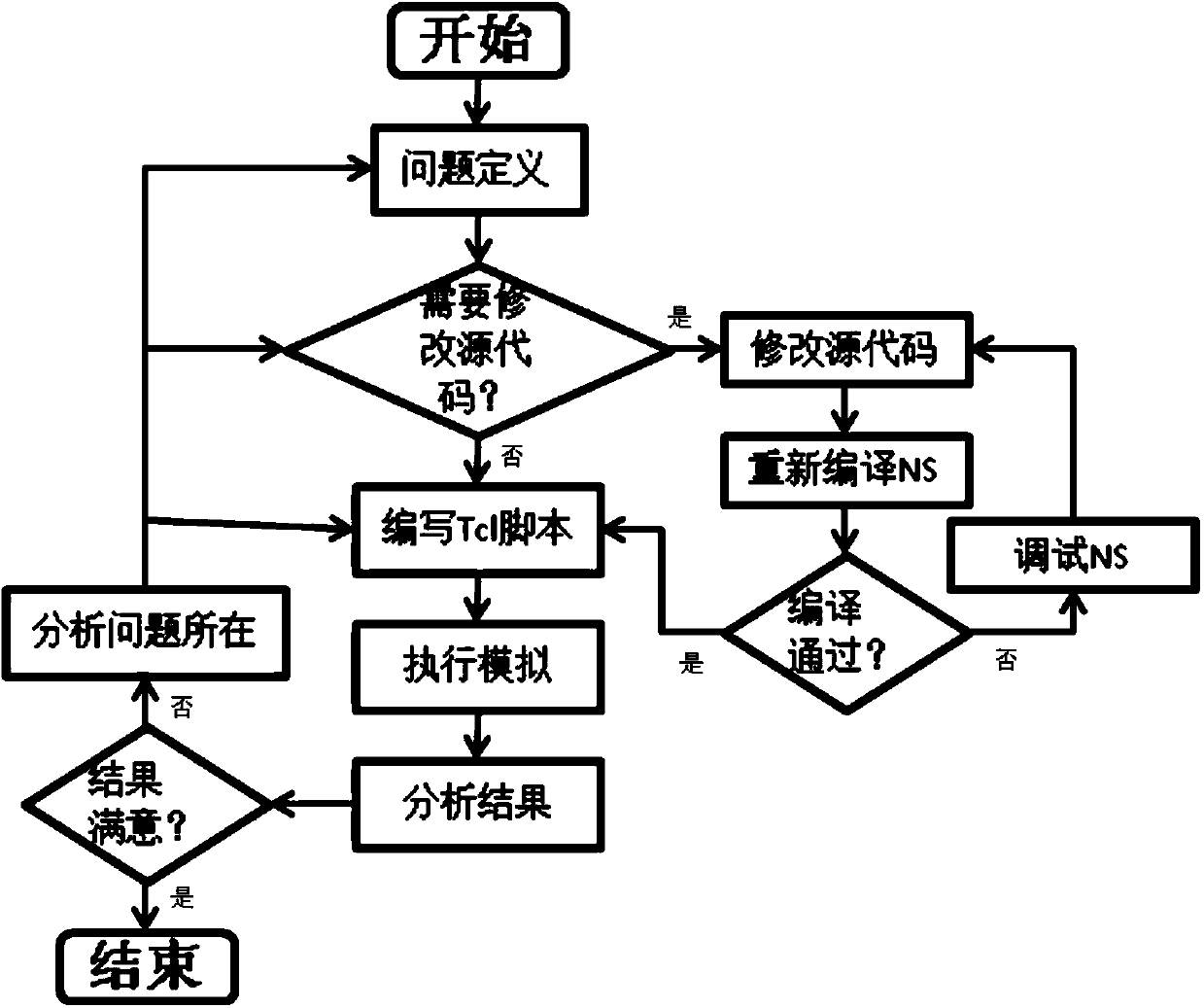Vehicle networking information delay transmission method based on MSPA algorithm
A transmission method and technology of Internet of Vehicles, applied in the field of Internet of Vehicles information delay-tolerant transmission, can solve problems such as disconnection of information transmission network
- Summary
- Abstract
- Description
- Claims
- Application Information
AI Technical Summary
Problems solved by technology
Method used
Image
Examples
specific Embodiment approach 1
[0031] Specific implementation mode 1: the following combination figure 1 To explain this embodiment, the method for delay-tolerant transmission of car networking information based on the MSPA algorithm described in this embodiment is as follows:
[0032] Step 1: Generate the original relay node;
[0033] Step 2: The relay node broadcasts the information packet once;
[0034] Step 3: The relay node queries the car nodes whose speed is greater than its own in the transmission circle, records the speed of the car nodes, and forms a speed_list;
[0035] Step 4. Select the car node with the highest speed in the speed_list obtained in step 3 as the next relay node, set the time it takes to leave the launch circle as minimum_time, and start the timer;
[0036] Step 5: Determine whether the timer time is less than minimum_time, if not, execute step 6, if yes, execute step 8;
[0037] Step 6. The relay node broadcasts the information packet once, and then sends the permission packet to the subse...
specific Embodiment approach 2
[0047] Specific implementation manner 2: This implementation manner further explains the implementation manner 1. The query packet in step eight includes a From_ID data packet, a Time data packet, and a Check data packet;
[0048] The length of the From_ID data packet is 4B, which is used to indicate the sender of the query packet;
[0049] The length of the Time data packet is 1B, which is used to indicate the time when the query packet is generated;
[0050] The length of the Check data packet is 1B, which is used to indicate the query function of the query packet.
specific Embodiment approach 3
[0051] Specific embodiment 3: This embodiment further explains the first embodiment. The information packets described in step 2, step 6 and step 13 are the same, including From_ID packet, Time packet, Direction packet and Data packet;
[0052] The length of the From_ID data packet is 4B, which is used to indicate the sender of the information packet;
[0053] The length of the Time data packet is 1B, which is used to indicate the time when the information packet was generated;
[0054] The length of the Direction data packet is 1 bit, which is used to indicate whether there are relay nodes in the forward and reverse directions. Direction0 indicates that there are relay nodes only in the positive phase, and Direction0 indicates that there are relay nodes in both directions;
[0055] The length of the Data packet is 995B, which is used to indicate the information to be sent by the packet.
PUM
 Login to View More
Login to View More Abstract
Description
Claims
Application Information
 Login to View More
Login to View More - R&D
- Intellectual Property
- Life Sciences
- Materials
- Tech Scout
- Unparalleled Data Quality
- Higher Quality Content
- 60% Fewer Hallucinations
Browse by: Latest US Patents, China's latest patents, Technical Efficacy Thesaurus, Application Domain, Technology Topic, Popular Technical Reports.
© 2025 PatSnap. All rights reserved.Legal|Privacy policy|Modern Slavery Act Transparency Statement|Sitemap|About US| Contact US: help@patsnap.com



